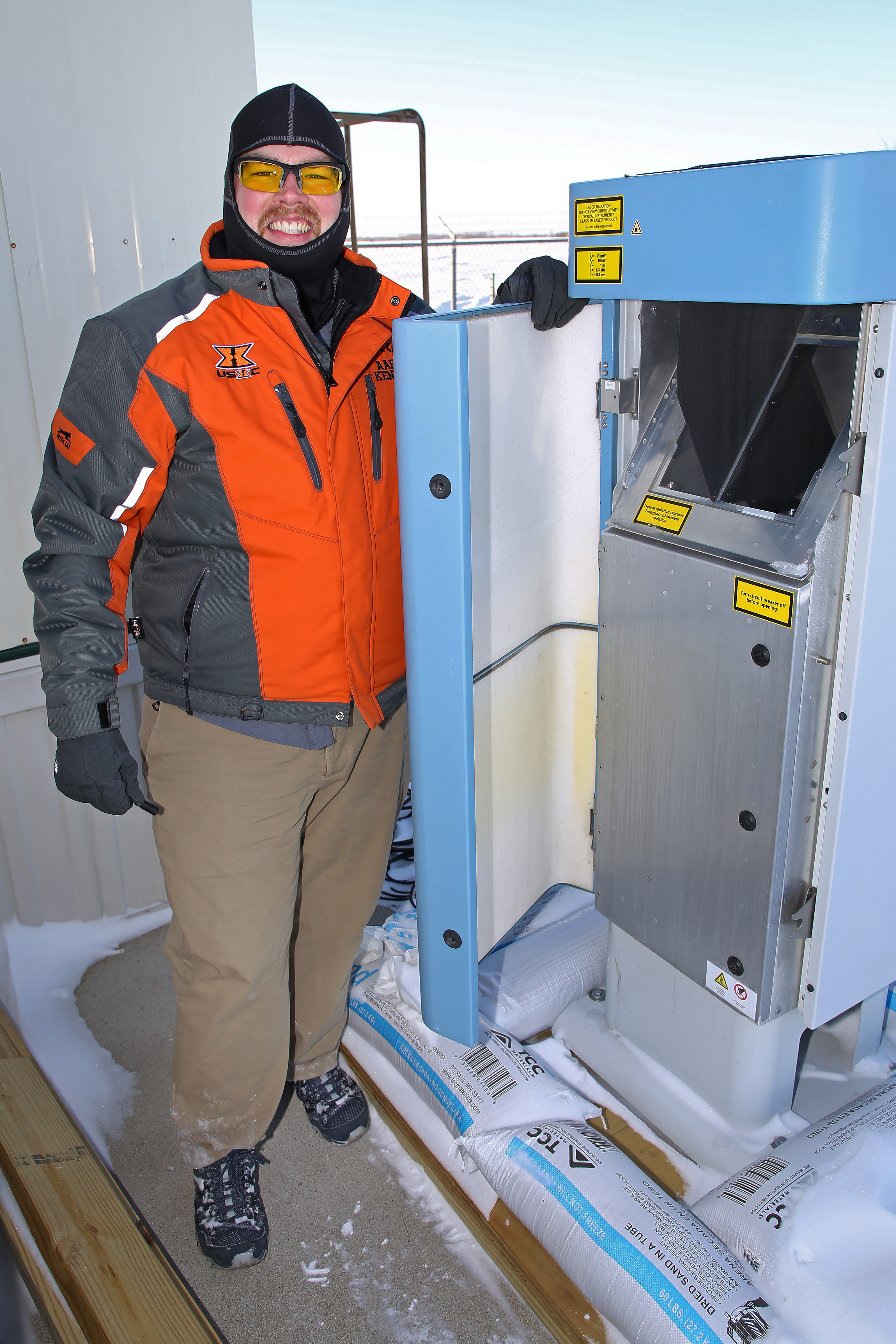Aaron Kennedy: Snow Studies With an ARM Twist
Published: 4 August 2020
A snow researcher leverages cold-weather ARM data from around the world

Aaron Kennedy, a severe-weather researcher at the University of North Dakota, is conducting a rare deep study of blowing snow. He asks: Does it have a place in models, even at the global scale? What are the best ways to detect, describe, and measure the kind of flake-fragmenting snow blown aloft by local winds?
The work, midway to completion, is funded by Atmospheric System Research (ASR) at the U.S. Department of Energy (DOE) and relies on data from DOE’s Atmospheric Radiation Measurement (ARM) user facility.
Kennedy draws on measurements from the 2015–2017 ARM West Antarctic Radiation Experiment (AWARE) and from ARM’s North Slope of Alaska atmospheric observatory. He also plans to use measurements from several ARM Mobile Facility deployments he will decide on later in 2020.
Blowing snow has an unknown level of impact on earth systems, including the mass balance of ice sheets; little is known about its macrophysics.
Kennedy lives in the Red River Valley, a region of North Dakota and Minnesota with more recorded blizzards every year than anywhere else in the lower 48 U.S. states.
“Meteorologically, we are probably in one of the coolest places in the country for hazardous weather,” he says, including tornadoes and bruising thunderstorms in the summertime. “I love it.”
Read a full scientist profile of Kennedy on the ASR website.
Keep up with the Atmospheric Observer
Updates on ARM news, events, and opportunities delivered to your inbox
ARM User Profile
ARM welcomes users from all institutions and nations. A free ARM user account is needed to access ARM data.


















